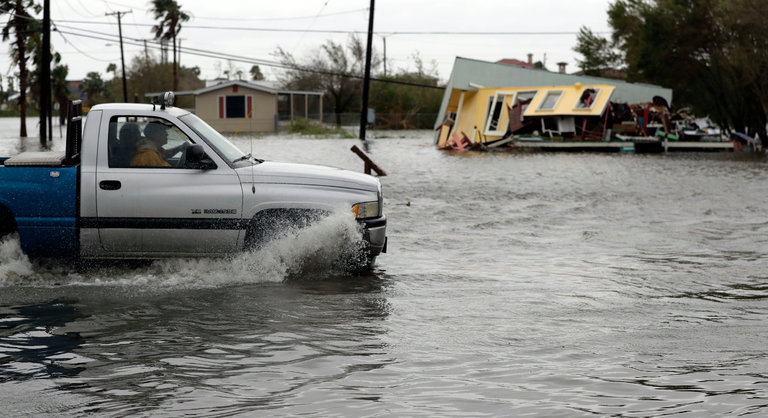Harvey strikes US
August 28, 2017 | Expert Insights

The state of Texas in United States has been hit by one of the deadliest hurricane’s in its history.
Thousands have been had to be rescued and many others have remained stranded due to flooding. At least six have died and the gasoline prices have also surged as a result.
Background
Multiple experts in the US are comparing Hurricane Harvey to another deadly hurricane to hit the US – Hurricane Katrina. The hurricane which hit the US in 2005, was the costliest natural disaster and one of the five deadliest hurricanes in the nation’s history. At least 1,245 people died in the hurricane and subsequent floods. It also incurred damages worth $108 billion.
Houston is America’s fourth largest metro area. Harvey landed in costal Texas as a category 4 hurricane on August 26, 2017. Experts are still trying to decipher if climate change had a role to play in the formation of the hurricane and its size. Feet of water have risen in Houston and much of the city has been buried under water. The National Weather Center simply reported, “This event is unprecedented and all impacts are unknown and beyond anything experienced.”
The economy of Houston is based on its flourishing energy industry, particularly the oil sector. Houston is known as a world capital of the oil and gas industry with over 5,000 energy firms doing business in the region
Analysis
Authorities in the US have been issuing grave warnings regarding the extent of damage they are still expecting from Harvey. Elaine Duke, acting homeland security secretary said, “Today we are deeply concerned with those in Houston and surrounding areas who are stranded and in need of immediate assistance. While hurricane force winds have diminished, I want to stress that we are not out of the woods yet, not by a long shot. Harvey is still a dangerous and historic storm.”
People have been told to head to roof in case the water reached the top of their buildings. FEMA Administrator Brock Long said that the storm will result in 30,000 people moving to shelters. He also said that an additional 450,000 will seek assistance. Thousands have already been rescued.
In this backdrop, the U.S. gasoline prices hit two-year highs as the floods forced refineries in the region to shut down. Among them were giants such as Royal Dutch Shell, and Exxon Mobil's Baytown, Texas, plant. Spot prices for U.S. gasoline futures RBc1 rose by 7% to a peak of $1.7799 per gallon. Olivier Jakob, managing director of Petromatrix told Reuters, “Global refining margins are going to stay very strong. If (U.S.) refineries shut down for more than a week, Asia will need to run at a higher level, because there’s no spare capacity in Europe.”
However, experts are expecting oil prices to remain the same in the near future. Mark Pervan, a Sydney-based chief economist for AME Group, told Bloomberg, “We’ll see higher pump prices, but I think the crude oil price is likely to remain more steady. We’re certainly looking at a slightly different market dynamic than we did last time we had a big weather event like this. The U.S. oil production landscape has moved more onshore essentially, away from the Gulf of Mexico.”
Assessment
Our assessment is that Hurricane Harvey is going to cost US billions of dollars in recovery. There will be thousands who will need to be re-located and a large portion of the state’s infrastructure will have to be re-built.








Comments